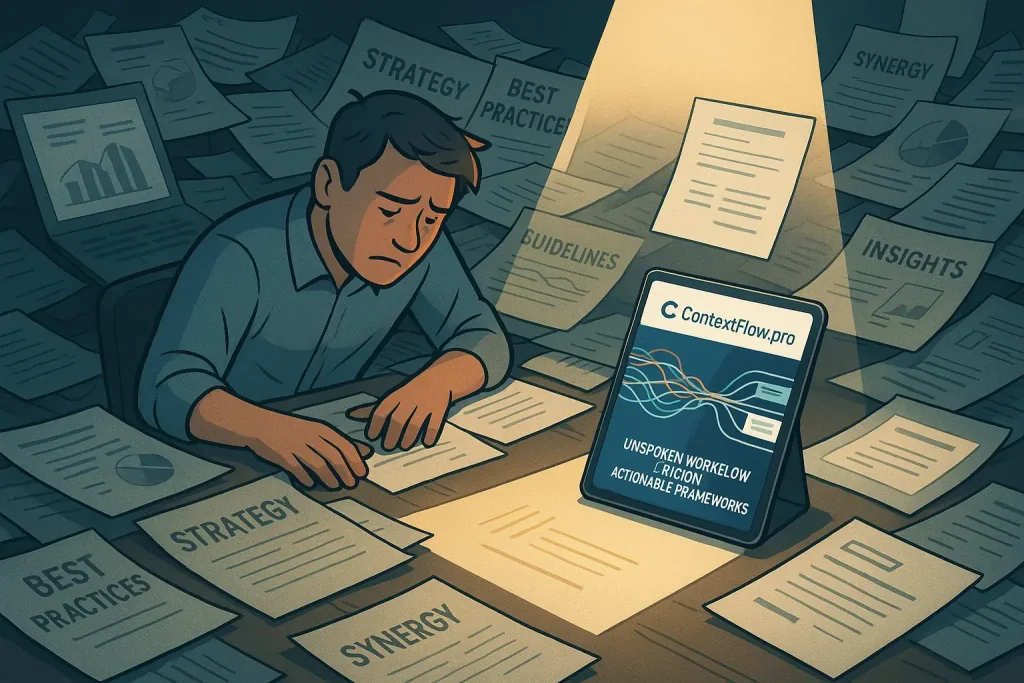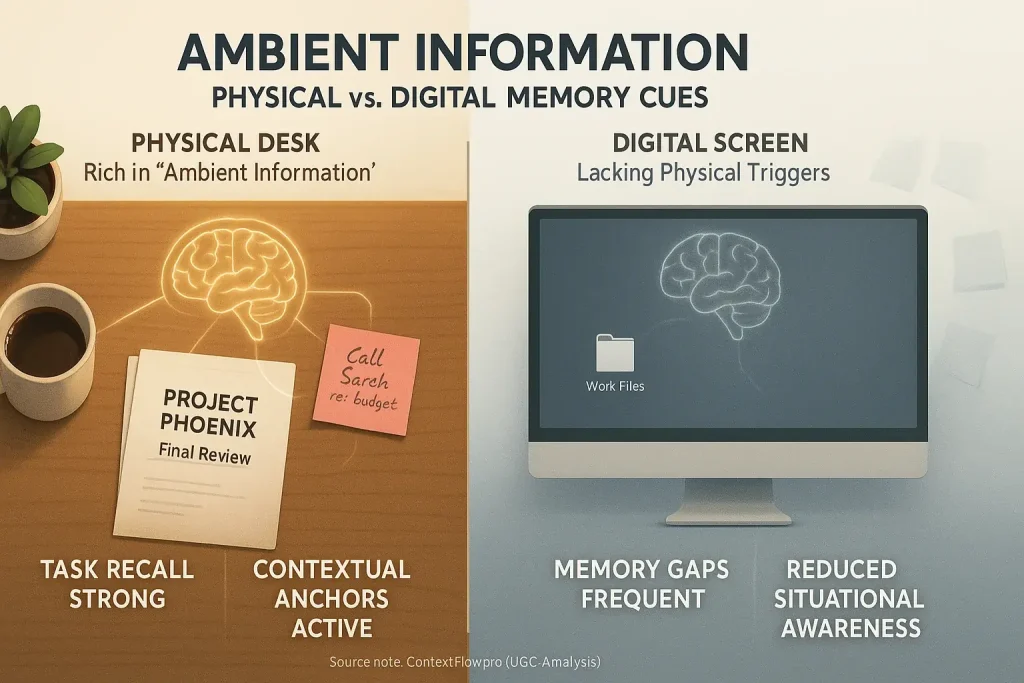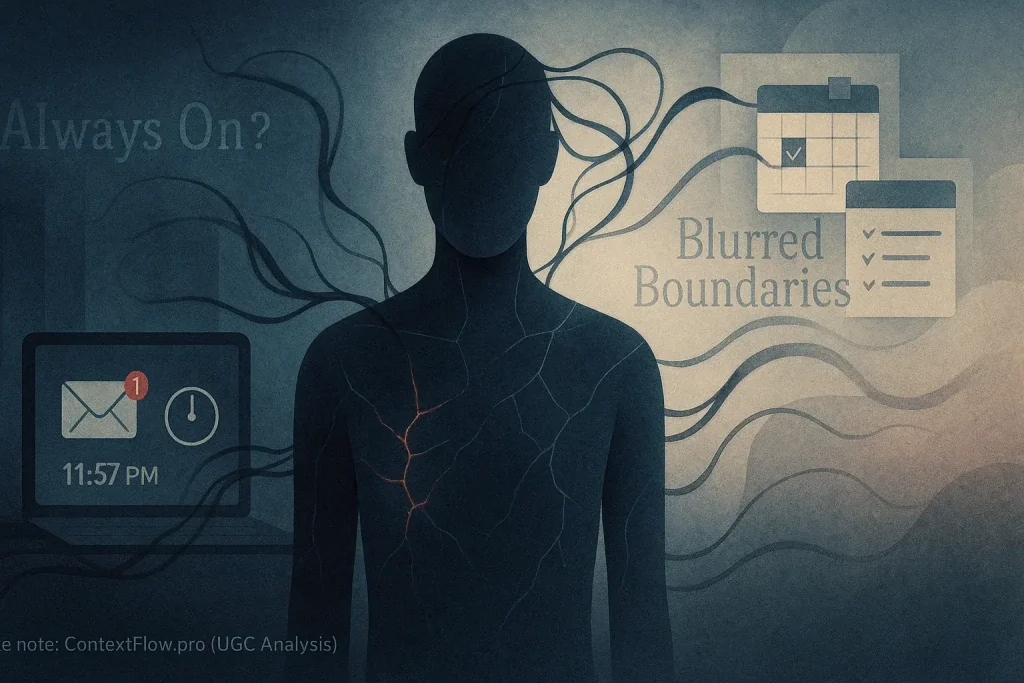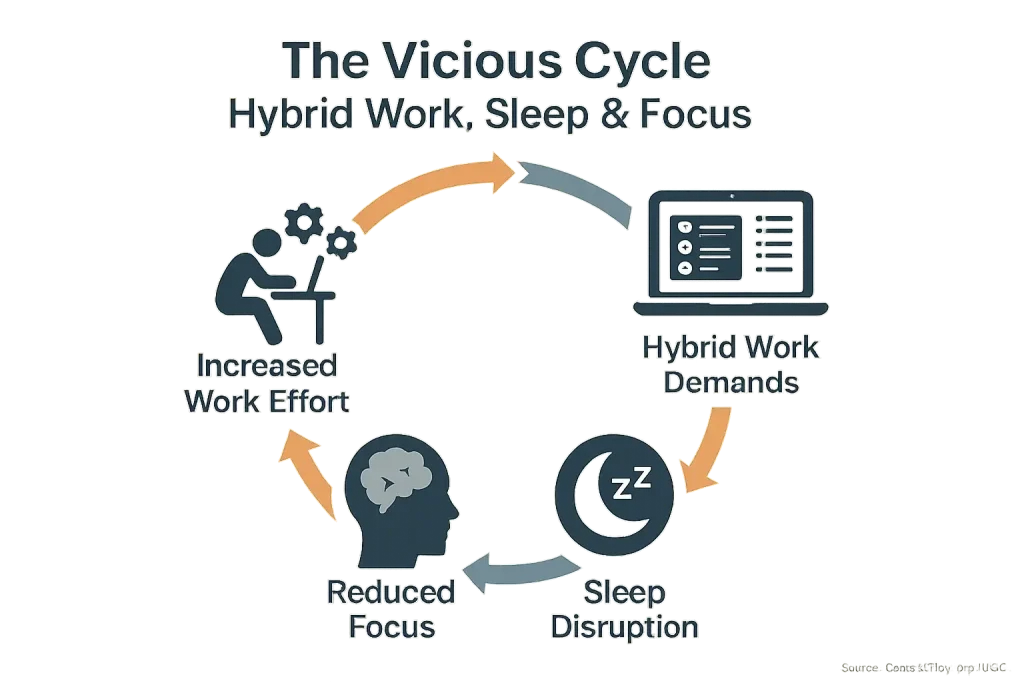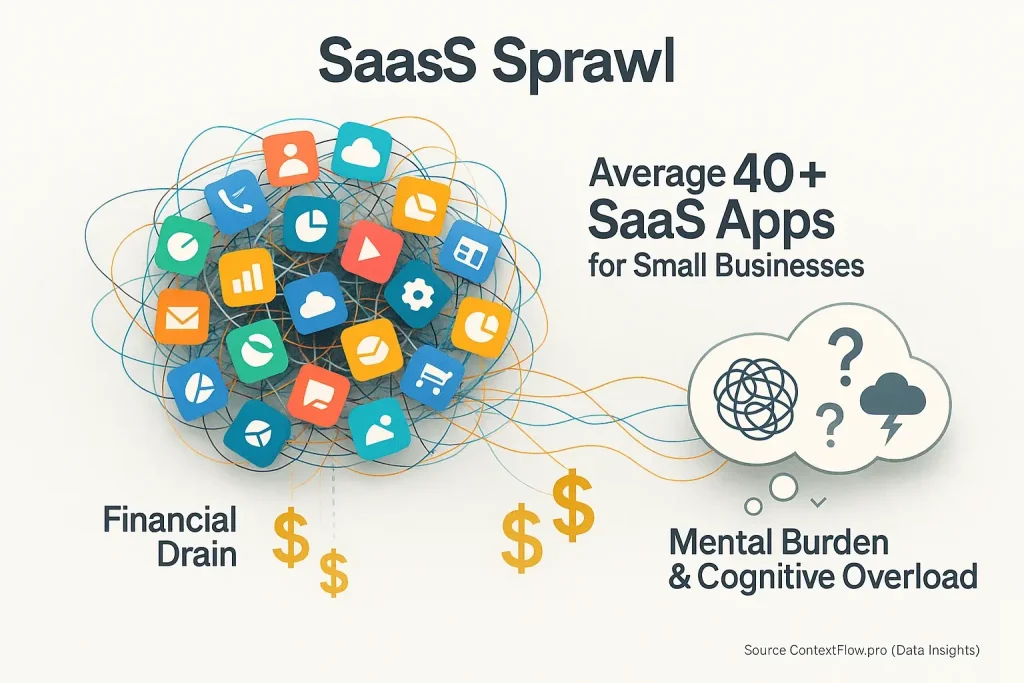The Unseen Divide: What is the Hybrid Meeting Participation Gap?
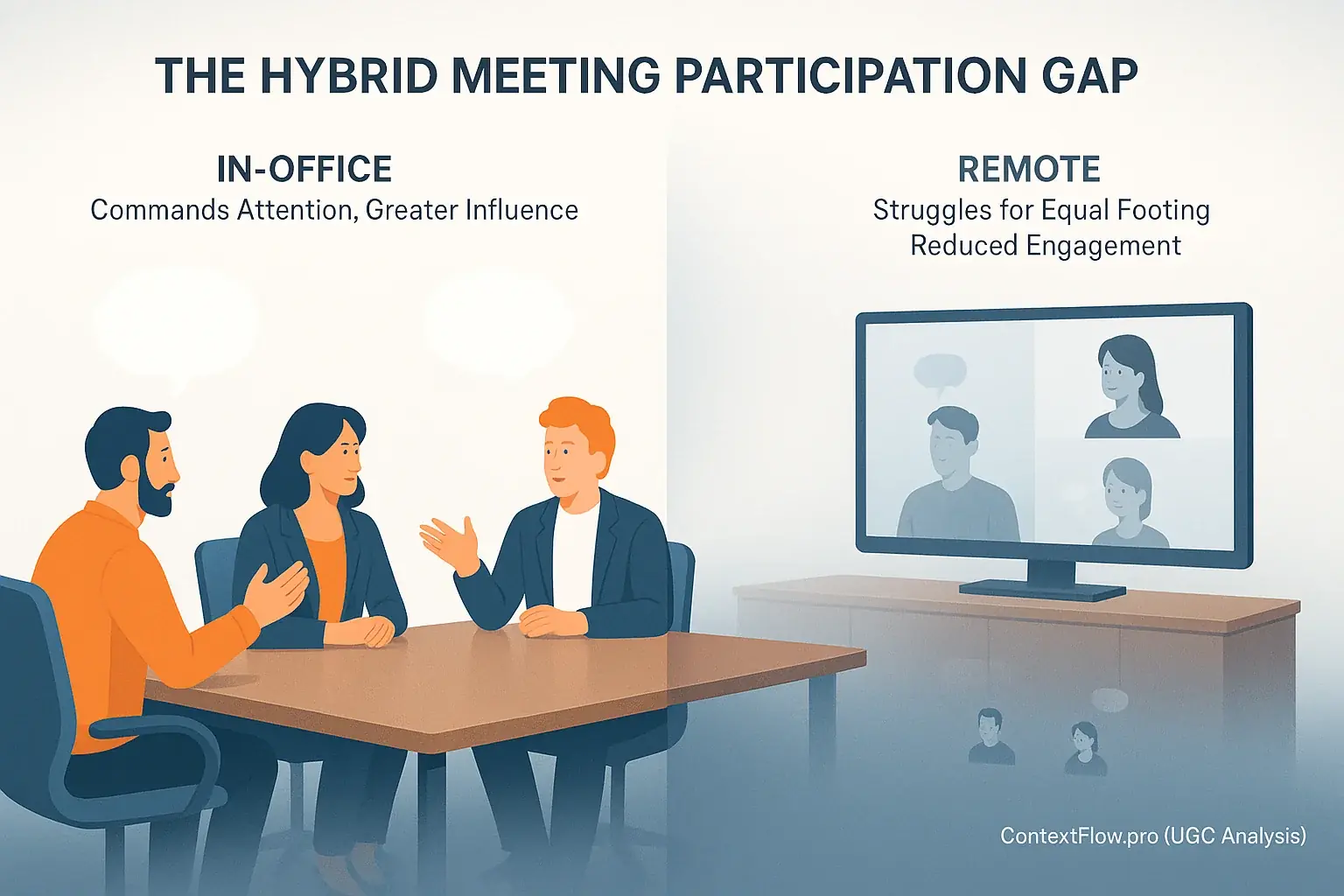
Many remote professionals describe a familiar feeling in hybrid meetings. It's the sense of being on the outside, looking in. Our UGC analysis reveals this experience pinpoints a widespread issue: the Hybrid Meeting Participation Gap. This gap is the measurable disparity in engagement and influence between remote attendees and their in-office counterparts. Remote voices often struggle for equal footing. In-office presence frequently commands more attention.
Consider a typical scenario users report. A remote team member has a vital insight. They attempt to interject. The physical room's rapid-fire discussion, however, easily overlooks their digital cue. Colleagues in the room might debate, reach a consensus, and proceed, unintentionally bypassing valuable remote input. This common occurrence, as countless user accounts confirm, isn't usually born from ill intent. The structure of many hybrid meetings inherently creates these unintentional barriers to equal participation.
The consequences of this participation gap are substantial. Decision-making can become unbalanced, often reflecting the perspectives of those physically present. Team cohesion erodes when remote members feel unheard or undervalued. Their potential contributions are lost. Ultimately, overall meeting effectiveness declines significantly. Addressing this subtle yet pervasive divide is essential for true hybrid work productivity.
The Silent Voices: When Remote Input Goes Unheard (User Testimonies)

Many remote participants share a common frustration. "I tried to speak up. Three times." Their input gets lost. Hybrid meetings often create an conversational flow that inadvertently overlooks them. Our UGC analysis reveals a consistent theme: remote team members struggle to find a natural opening to contribute. Their voices simply don't carry the same immediate weight as those physically present. This is a widespread challenge.
Why does this happen? Technical issues frequently exacerbate the problem. Users report audio lag making their contributions land seconds too late. The conversation has already moved. Video delay can obscure vital non-verbal cues, like someone leaning in to speak. Remote participants cannot easily "read the room" or sense the subtle shifts in dialogue that signal an opportunity to interject. Our data synthesis shows these technical barriers are significant contributors to remote voices being silenced.
In-office dynamics also play a crucial, often unintentional, role. Quick side-chats between colleagues in the room are natural. They are also exclusive. Body language and shared physical context can create a strong in-group focus. This unintentionally pushes remote attendees to the periphery. The energy and engagement within the physical meeting space can inadvertently overlook those joining digitally. It's a subtle exclusion. A very real one.
The consequence? Remote participants often feel unheard. They feel their contributions are less valued. This experience, echoed in countless user accounts, breeds disengagement. The silent struggle of trying to participate without being truly acknowledged takes a toll. Professionals want their expertise recognized, regardless of location.
The Huddle Trap: How In-Office Side Conversations Exclude Remote Colleagues (User Frustrations)

User experience analysis reveals a pervasive frustration in hybrid meetings. In-office attendees frequently lean in for quick side conversations. A whispered comment. A brief, shared glance. Remote participants hear only muffled sounds, if anything. This is the 'huddle trap'. It instantly makes remote colleagues feel like they are pressing their ears against a closed door, completely shut out.
The consequences are significant. Remote users report missing crucial context during these impromptu physical huddles. "What was just decided?" echoes a common sentiment found in user feedback. "What was that joke everyone laughed at?" Others describe feeling invisible. This persistent exclusion, fragment by fragment, leads many remote workers to feel like second-class citizens on their own teams. The flow of information breaks. Engagement plummets.
These micro-exclusions, often unintentional, have a cumulative impact. Team dynamics suffer. When a substantial part of the team regularly misses these undocumented sidebars, collaborative decision-making erodes. User reports indicate this isn't just about hurt feelings; it's about fractured communication pathways. The huddle trap, while seemingly minor, systemically undermines the inclusivity vital for effective hybrid work.
Tech Disparities: When Meeting Room Setups Accidentally Favor In-Office Attendees (User Insights)
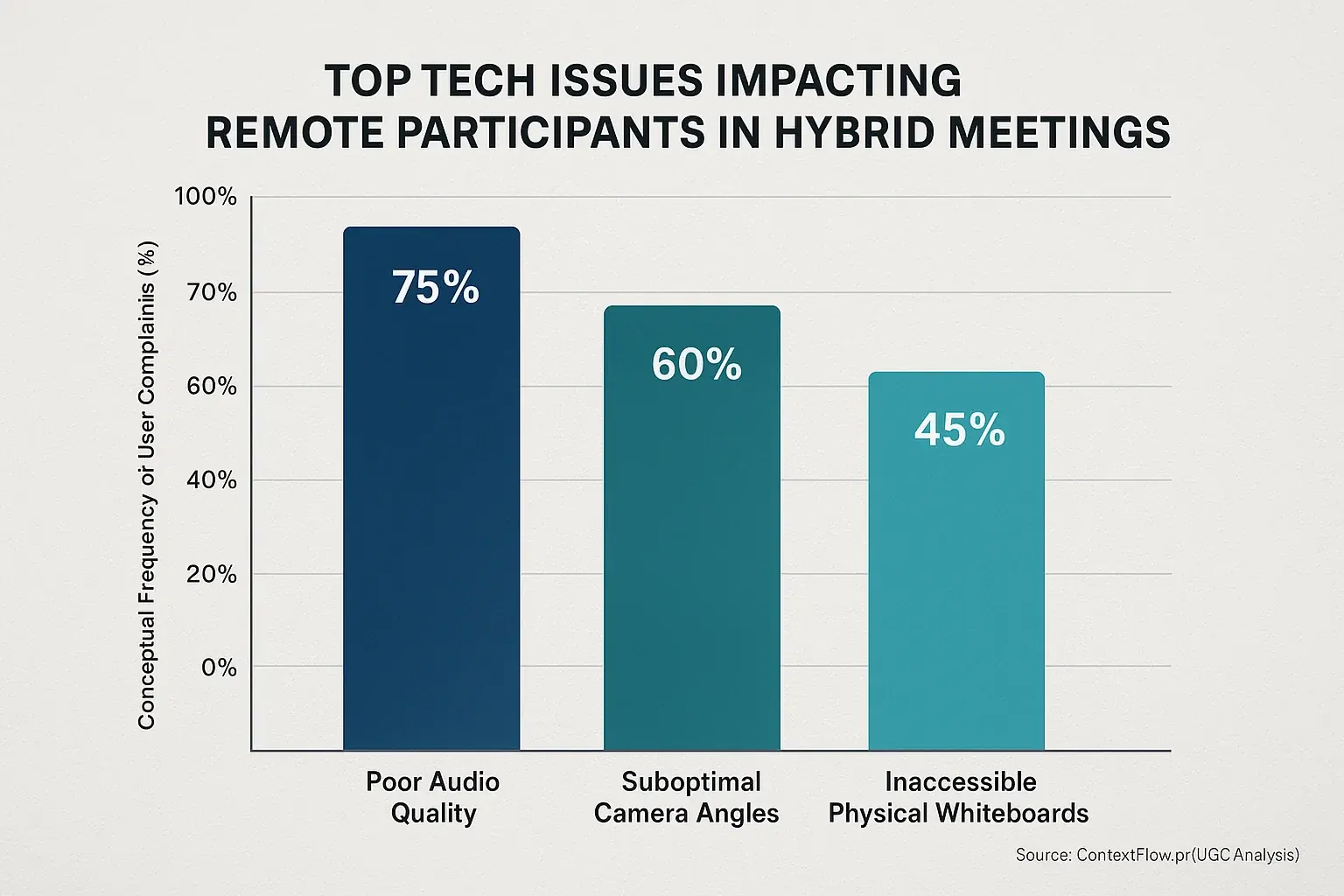
Hybrid meeting technology frequently disappoints remote participants. Our UGC analysis confirms this widespread user complaint. The physical meeting room's setup often inadvertently benefits those physically present. Audio quality consistently emerges as a primary pain point. Echoes disrupt clarity. Distant microphones make in-office speakers sound faint or garbled. Remote attendees struggle to understand conversations. They miss vital context. This auditory disconnect profoundly impacts their ability to contribute effectively.
Visual disparities exacerbate the remote attendee's challenge. Suboptimal camera angles frequently plague hybrid meetings. Remote users cannot clearly see who is speaking. Lack of dynamic speaker tracking means the camera often misses key interactions. Imagine trying to follow a passionate discussion. You only see a static, wide shot of the conference table. Important body language and non-verbal cues are completely invisible. This creates a significant blind spot, leaving remote team members feeling disconnected from the room's dynamics.
Reliance on physical whiteboards often excludes remote viewers entirely. In-office teams might sketch diagrams or list ideas. These visuals remain unseen by anyone not in the room. This occurs when there is no digital mirroring of the whiteboard's content. Critical information shared visually becomes inaccessible. This lack of shared visual context disadvantages remote participants during brainstorming or detailed planning sessions.
Users report that basic tech checks can mitigate some of these issues. Test audio with a remote colleague before the meeting starts. Can they hear everyone clearly? Verify camera views provide useful sightlines for remote attendees. Ensure any screen sharing or digital whiteboard tools are functioning correctly for all. These simple actions, consistently applied, can improve the experience for remote participants. They help bridge the technology-induced participation gap.
The Ripple Effect: How the Participation Gap Harms Decisions, Morale & Context Flow
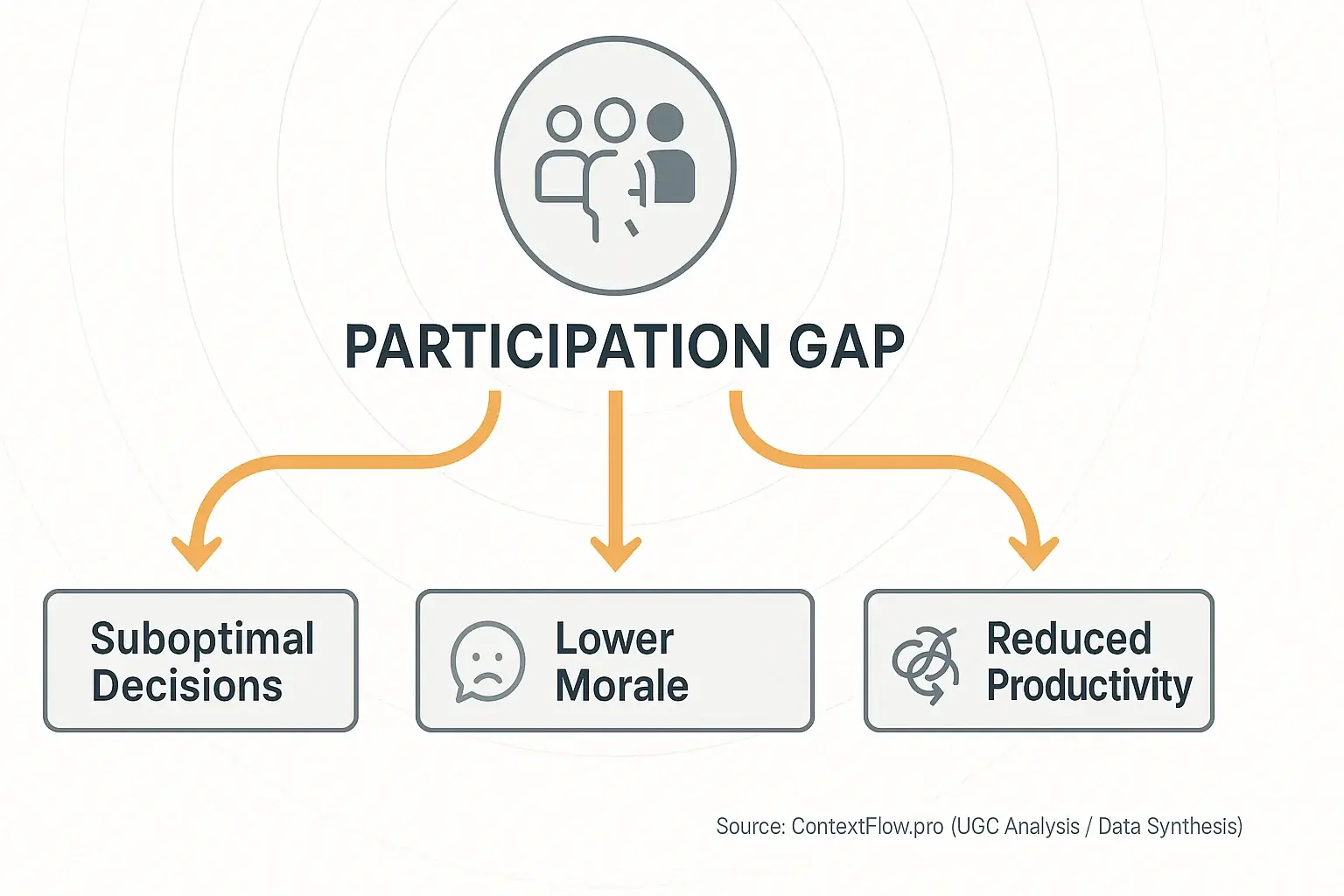
The participation gap directly harms decision quality. This is not merely an issue of fairness. Voices go unheard. Critical insights? Lost. Teams then make suboptimal choices. Our analysis of user experiences reveals decisions lacking diverse input frequently require costly rework, consuming valuable time and resources. Missed perspectives become missed opportunities, a tangible cost for any organization.
This gap also erodes team trust. Morale plummets. Remote team members, in particular, often feel marginalized. User discussions consistently highlight a "second-class citizen" feeling when their ability to contribute is hampered. These individuals begin to question their own value within the team. Being unheard breeds deep resentment. Such disconnection is a painful, recurring theme evident in extensive user feedback.
Individual context flow shatters under these conditions. Struggling to participate in discussions? It breaks deep focus. Exclusion, whether intentional or accidental, acts as a potent workflow disruptor. Users report intense, lingering frustration. This mental drag extends far beyond the meeting's end, making it difficult to regain momentum. Re-engaging with vital tasks becomes a monumental effort. Productivity simply dips.
These ripple effects inevitably hinder overall team productivity. Innovation suffers too. Disengaged individuals contribute far less creative energy and fewer novel solutions. Suboptimal decisions, born from incomplete input, stall progress on key initiatives. Our research into user-generated content uncovers a clear trend here. Teams wrestling with persistent participation gaps report noticeably diminished creative output and significant project delays. The team's long-term health and effectiveness? Both are genuinely at risk.
Bridging the Gap: User-Tested Strategies for Truly Inclusive Hybrid Meetings
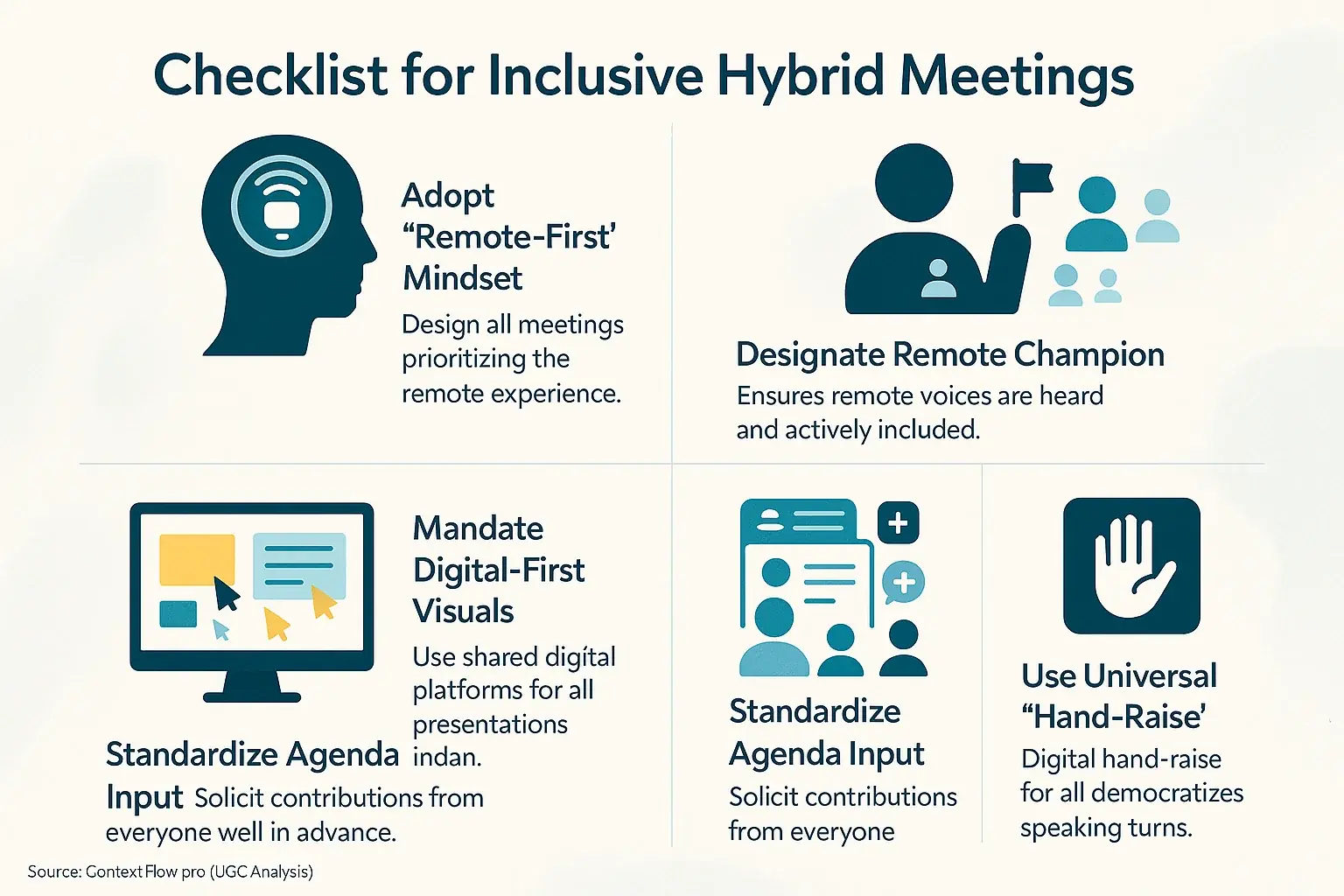
The participation gap in hybrid meetings is a common, deeply felt frustration. Our UGC analysis confirms this. Yet, solutions are within your team's reach. Deliberate effort bridges this divide. Adopting a 'remote-first' mindset for every meeting is a foundational step many successful teams implement. This approach means all meeting design and facilitation choices prioritize the remote experience. Even if only one person joins virtually, this shift levels the playing field significantly.
Clear meeting protocols are vital. Users consistently report their effectiveness. These community-proven strategies create necessary structure. They actively promote fairness. Consider implementing these user-backed ideas:
- Designate a Remote Champion: This individual advocates for remote participants. They ensure remote voices are heard. They flag any in-room discussions unheard by remote attendees. Many teams find this rotating role transformative for meeting equity.
- Mandate Digital-First Visuals: All presentations, notes, and whiteboarding must occur on shared digital platforms. This gives everyone equal visual access. Physical whiteboards, user reports confirm, often exclude remote team members.
- Standardize Agenda Contributions: Solicit agenda items from all attendees, remote and in-office, well in advance. This practice ensures diverse topics get fair airtime. It effectively prevents in-office dominance of the meeting's agenda.
- Implement 'Hand-Raise' Features Universally: Encourage both in-room and remote attendees to use digital hand-raise features. This simple act democratizes speaking turns. It prevents in-room participants from easily, and often unintentionally, interrupting their remote colleagues.
Technology, when used thoughtfully, powerfully equalizes access. It is not a panacea. Strategic tech choices, however, make a genuine difference. User experiences highlight specific, impactful tools. Investing in quality audio for remote participants is paramount; poor audio is a top complaint. Many users also suggest dedicated cameras focusing on the active speaker or a 360-degree view of the room. Always use digital whiteboards. Even with a physical board present, a digital counterpart ensures remote colleagues see and contribute equally. Consistent use of the chat function for questions and comments also helps. It allows for asynchronous contribution and captures ideas that might otherwise be lost.
Fostering a culture of active, equitable participation requires conscious, ongoing effort. This goes beyond just technology. Facilitators play a key role here. Our data synthesis shows simple, deliberate actions yield substantial results. Directly ask remote participants for their input by name. Do this routinely before moving to new topics. Utilize round-robin techniques for critical discussions. This method ensures every voice contributes valuable perspective. Acknowledge and validate remote contributions visibly and audibly. This simple validation encourages further engagement from everyone.
Truly inclusive meetings are not merely a courtesy. They are absolutely essential. They directly drive productivity. They significantly boost team morale and cohesion. They foster critical innovation. User experiences overwhelmingly confirm this connection. Mastering these inclusive dynamics is a non-negotiable key to unlocking your team's full potential in any hybrid work model.


